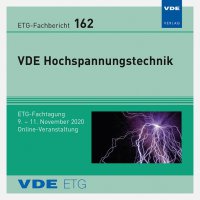Thermal modelling of fittings for high temperature low sag conductors
Konferenz: VDE Hochspannungstechnik - ETG-Fachtagung
09.11.2020 - 11.11.2020 in online
Tagungsband: VDE Hochspannungstechnik
Seiten: 7Sprache: EnglischTyp: PDF
Autoren:
Soppe, Bastian; Frehn, Tobias; Puffer, Ralf (IAEW of RWTH, Aachen, Germany)
Krispin, Hans-Joerg; Dansachmueller, Mario; Zemke, Simon (Richard Bergner Elektroarmaturen GmbH & Co. KG, Germany)
Inhalt:
With the use of high-temperature low sag (HTLS) conductors, high operating temperatures (> 200 °C) are possible which require a reconsideration of test and design specifications for fittings used to tension, support and connect the conductor. A promising approach for the consideration of thermally induced ageing effects of fittings materials is the determination of the real thermal load experienced during service due to current and weather conditions. With this approach, a cumulative temperature frequency distribution can be determined over the life time of a fitting. Based on ageing models, this distribution can be related to the change in a given ageing property value over the operation time. In turn, this can be used to define test specifications that can reflect this ageing process in tests. In order to create temperature frequency distributions of fittings, valid thermal simulation models are necessary which are presented in this paper. Due to the complexity of some fittings, two approaches are pursued: 3D FEM model and a simplified 1D model. Both models can be used to calculate steady state temperature distributions along fittings as a function of current, wind speed, ambient temperature and global radiation. In this paper measured and calculated values are presented for two selected arrangements of conductor and fitting: A wedge-type tension clamp used for invar core conductors and a compression mid span joint used for conductors with composite cores. For both simulation approaches a satisfactory match with experiment is achieved. In most cases, the FEM model show slightly smaller deviations from the experiment. However, the calculation time of the 1D model is significantly lower compared to the FEM model. The satisfactory accuracy of the 1D model makes it suitable for the calculation of extensive current and weather scenarios. For an accurate calculation of the temperatures with the presented models, a precise knowledge of the parameters (geometry, material parameters etc.) is required.


